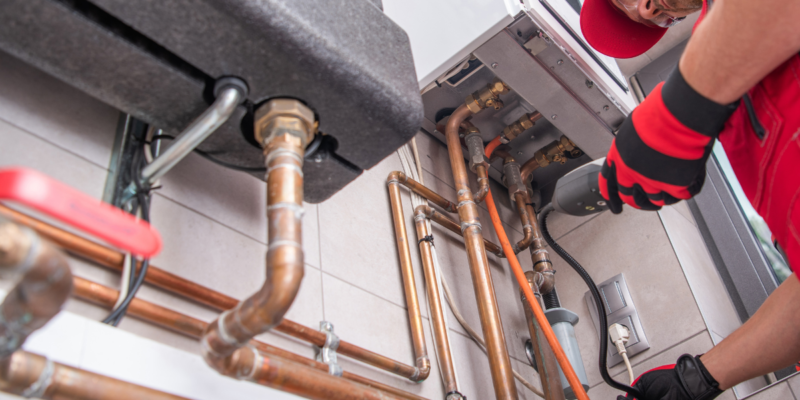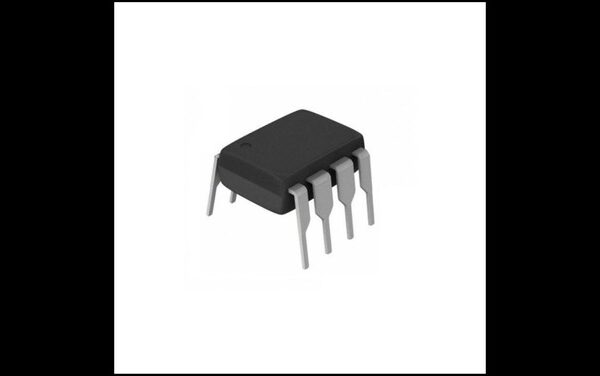
The importance of a well-designed ventilation system cannot be overstated in the quest for a comfortable and efficient home. It is critical to enhance indoor air quality, reduce energy costs, and ensure a healthy living environment. Understanding how a ventilation-system works can significantly impact your home’s overall efficiency, whether in a newly built house or an older residence. In this post, we will explore the fundamentals of ventilation, delve into various types of systems, and highlight the benefits of investing in a robust ventilation strategy.
Understanding the Basics of Ventilation-systems
Ventilation-systems are essential for maintaining a healthy indoor environment by facilitating the exchange of indoor and outdoor air. These systems play a crucial role in promoting respiratory health and comfort by controlling humidity levels, eliminating contaminants, and ensuring a continuous supply of oxygen. Ventilation-systems can also regulate indoor temperatures, creating a more comfortable living space.
There are three primary types of ventilation-systems: natural, mechanical, and hybrid. Natural ventilation relies on strategically placing windows, vents, and other openings to allow air to flow freely. This type of ventilation is most effective in regions with mild climates and homes with large windows.
On the other hand, mechanical ventilation actively uses fans and ductwork to move air throughout the house. This method is particularly beneficial in modern, energy-efficient homes that are well-sealed and lack sufficient natural airflow. Hybrid systems combine the principles of both natural and mechanical ventilation, leveraging the strengths of each to optimize air quality and energy efficiency. By understanding the basic functions and types of ventilation-systems, homeowners can make informed choices that enhance their indoor environment and overall home efficiency.
Types of Ventilation-systems and Their Applications
Ventilation-systems can be tailored to various needs and building designs, each offering unique benefits:
Natural Ventilation
This type relies on wind and thermal buoyancy to circulate air through strategically placed windows and vents. It’s most effective in homes with large windows and regions with mild climates.
Mechanical Ventilation
Utilizing fans and ductwork, this system ensures a consistent flow of fresh air, making it ideal for well-sealed, energy-efficient homes where natural airflow is limited.
Balanced Ventilation
This system provides an equal exchange of indoor and outdoor air, maintaining a pressure balance. It is effective in diverse climates and helps in maintaining consistent air quality.
Exhaust Ventilation
Commonly used in areas like bathrooms and kitchens, this system removes stale air, allowing fresh air to enter through passive vents or unsealed openings. It’s effective for spot ventilation needs.
Supply Ventilation
This system introduces outdoor air into the home, pushing stale air out through passive vents. It’s useful in dry climates and helps in maintaining indoor air quality.
By understanding the different types of ventilation-systems, homeowners can choose the most suitable option based on their home’s layout and climate conditions. Each system offers distinct advantages, from enhancing air quality to improving energy efficiency, ensuring a healthier and more comfortable living environment.
What is an Energy Recovery Ventilator, and How Does It Work?
An energy recovery ventilator (ERV) is an advanced mechanical ventilation-system that enhances home efficiency by transferring heat and moisture between outgoing and incoming air streams. The ERV operates through a heat exchanger, which enables thermal energy transfer without mixing the two air streams. During colder months, the ERV uses the exhausted warm air to preheat the incoming cold air, reducing the need for additional heating and lowering energy costs.
Conversely, in the summer, the ERV helps to cool the incoming warm air by expelling the cooler indoor air, which reduces the burden on your air conditioning system. One of the unique features of an ERV is its ability to manage moisture levels. As air passes through the heat exchanger, moisture is transferred between the outgoing and incoming air streams.
This moisture control is particularly beneficial in maintaining balanced indoor humidity levels, enhancing comfort and preventing mound growth. The dual function of heat and moisture transfer makes ERVs particularly well-suited for regions with high humidity levels, ensuring both temperature and humidity are kept in check. By integrating an ERV into your home’s ventilation-system, you can achieve a more efficient and comfortable indoor environment. By leveraging the energy already present in the home, you can maintain optimal living conditions with minimal additional energy expenditure.
Comparing Energy-Recovery Ventilators to Heat-Recovery Ventilators
While energy-recovery ventilators (ERVs) and heat-recovery ventilators (HRVs) aim to enhance home efficiency, they differ in their primary functions. HRVs focus on heat exchange, transferring heat between outgoing and incoming air streams to maintain indoor temperatures without moisture transfer. This makes HRVs particularly suitable for colder climates where managing excess humidity is crucial to prevent issues like mound growth.
ERVs, on the other hand, handle both heat and moisture exchange. They transfer thermal energy and moisture between air streams, which is beneficial for maintaining balanced indoor humidity levels. This dual function is especially advantageous in regions with high humidity, ensuring that temperature and moisture levels are kept in check. Choosing between an ERV and HRV largely depends on your local climate and specific indoor air quality requirements.
For instance, an HRV may be more effective in colder, drier climates due to its focus on heat recovery without adding moisture. In contrast, an ERV’s ability to manage both heat and humidity in humid regions makes it a more suitable option for maintaining a comfortable and efficient indoor environment. Both systems offer substantial benefits, but understanding their differences is key to selecting the right one for your home.
Key Factors to Consider When Choosing a Ventilation-system
Several critical factors should guide your decision when selecting a ventilation-system for your home. First, consider the size and layout of your home. Larger homes require more powerful systems to ensure effective airflow throughout, while smaller, less costly options might adequately serve smaller spaces. Climate is another essential consideration. ERVs or HRVs can provide better control over indoor conditions in regions with extreme temperatures or high humidity levels. Energy efficiency is also paramount. Opt for systems with high energy efficiency ratings to maximize long-term savings on your utility bills.
Noise levels are another factor to consider, especially for mechanical ventilation-systems. You’ll want to choose a system that operates quietly to maintain a peaceful living environment. Additionally, factor in your budget. While some systems may have a higher initial cost, their long-term energy savings can make them a more economical choice over time. Specific needs such as air quality and humidity control should be considered. For instance, if you have family members with allergies, a system that excels in air filtration will be particularly beneficial. Balancing these considerations will help you choose a ventilation-system that best meets your home’s unique requirements.
The Benefits of Installing a Mechanical Ventilation System
Investing in a mechanical ventilation system offers numerous advantages beyond improving air quality.
- One key benefit is energy efficiency, especially with advanced systems like energy-recovery ventilators (ERVs) and heat-recovery ventilators (HRVs). These systems significantly reduce heating and cooling costs by efficiently managing thermal energy and maintaining consistent indoor temperatures. This ensures a comfortable living environment without straining your HVAC system.
- Humidity control is another crucial advantage. Mechanical ventilation can effectively manage indoor humidity levels, which is essential in preventing mound growth and other moisture-related issues. Balanced indoor humidity also enhances comfort, making your home a more pleasant place to live.
- A mechanical ventilation-system dramatically improves indoor air quality. Continuous airflow helps reduce the concentration of indoor pollutants, allergens, and odors, contributing to a healthier living environment. This is particularly beneficial for households with members who have allergies or respiratory conditions.
- Many modern mechanical ventilation-systems are designed to operate quietly, ensuring that they don’t disrupt the tranquility of your home. Noise reduction is a significant advantage, especially if you are concerned about maintaining a peaceful living space.
- Lastly, these systems are often equipped with advanced filtration options, providing an extra layer of protection against outdoor pollutants. This makes them particularly valuable in urban areas or regions with high outdoor air pollution levels.
Installation and Maintenance Tips for Ventilation-systems
Proper installation and regular maintenance ensure your ventilation-system ventilation-system functions effectively and efficiently. Start by consulting with a certified HVAC technician for the installation process to guarantee the system complies with local codes and regulations and is optimally configured for your home. Once installed, schedule annual inspections to identify and address potential issues before they escalate.
Regular maintenance should include cleaning or replacing filters according to the manufacturer’s recommendations. Clean filters are crucial for maintaining optimal airflow and ensuring the system operates efficiently. Ductwork should also be routinely checked to ensure it is well-sealed and insulated. Leaky ducts can lead to significant energy loss, reducing the efficiency of your ventilation-system.
Keeping the ducts in good condition will help maintain consistent air quality and temperature throughout your home. Additionally, monitor your system’s performance by monitoring your energy bills and indoor air quality. A sudden increase in energy consumption or a noticeable decline in air quality can indicate that the system requires maintenance. Adhering to these tips ensures that your ventilation-system provides a comfortable and healthy indoor environment.
Conclusion
A well-designed ventilation system is indispensable for enhancing your home’s overall efficiency. By facilitating the exchange of indoor and outdoor air, these systems help regulate indoor temperatures, control humidity levels, and improve air quality. Advanced options like energy-recovery ventilators (ERVs) and heat-recovery ventilators (HRVs) offer significant energy savings by managing thermal energy and maintaining consistent indoor conditions. Furthermore, mechanical ventilation-systems ensure balanced airflow, reducing the concentration of indoor pollutants, allergens, and odors, which contributes to a healthier living environment.
FAQs
Q: How often should I run my mechanical ventilation system?
A: It’s generally recommended that mechanical ventilation system be run continuously to maintain optimal indoor air quality. However, the specific operation time may vary based on factors like home occupancy, local climate, and your system type.
Q: Can I install a ventilation-system myself?
A: While some homeowners might consider DIY installation, hiring a professional HVAC technician is highly recommended. Proper installation ensures the system operates efficiently and complies with local building codes and regulations.
Q: What are the signs that my ventilation-system needs maintenance?
A: Common indicators include increased energy bills, musty odors, uneven temperatures, and visible dust accumulation around vents. If you notice any of these signs, it’s advisable to schedule an inspection and maintenance service to address potential issues.
Q: Are ventilation-systems noisy?
A: Many modern ventilation-systems are designed to operate quietly, but noise levels can vary between models. If noise is a significant concern, look for systems specifically rated for low noise output and consult your HVAC technician about the quietest options available.
Q: Will a ventilation-system help with allergies?
A: A properly functioning ventilation-system can help reduce indoor allergens by continuously filtering and replacing stale indoor air with fresh outdoor air. This is particularly beneficial for households with members who suffer from allergies or respiratory conditions.











